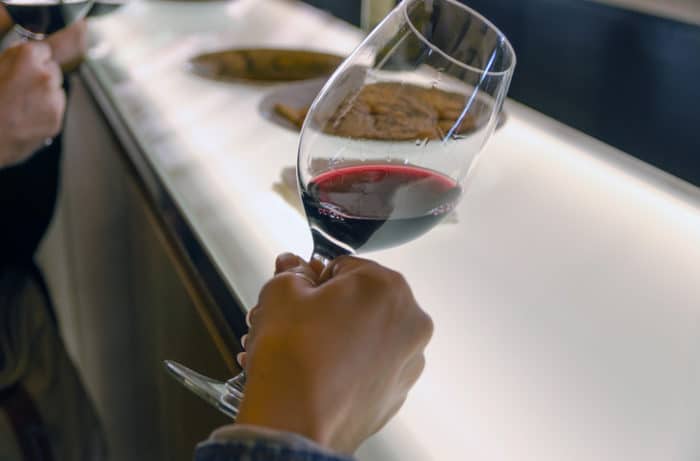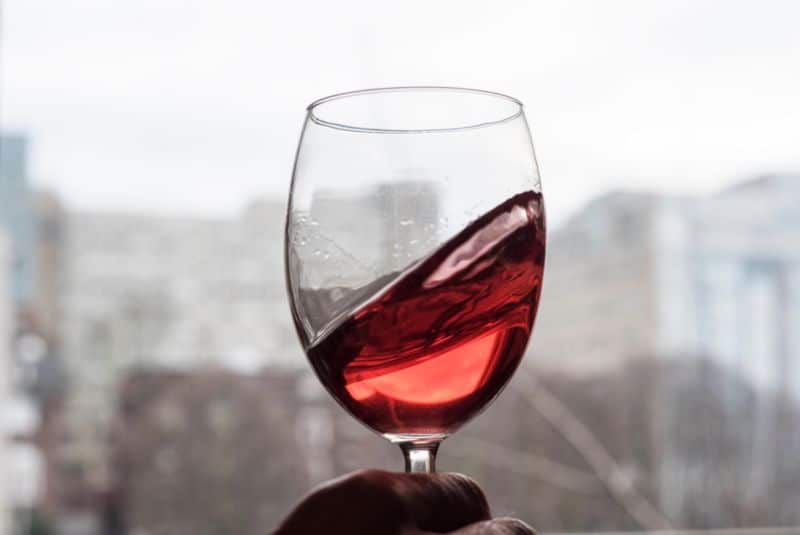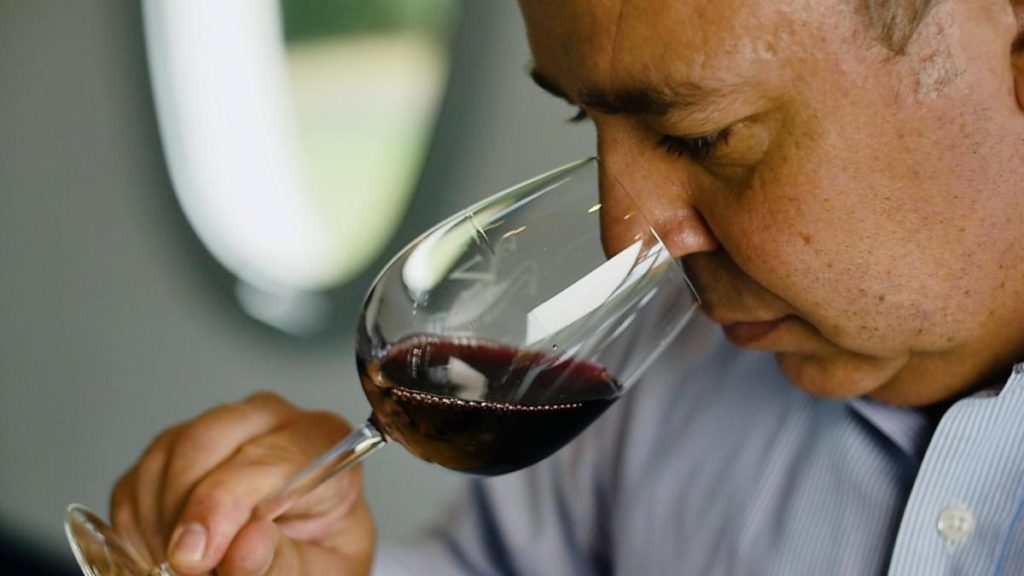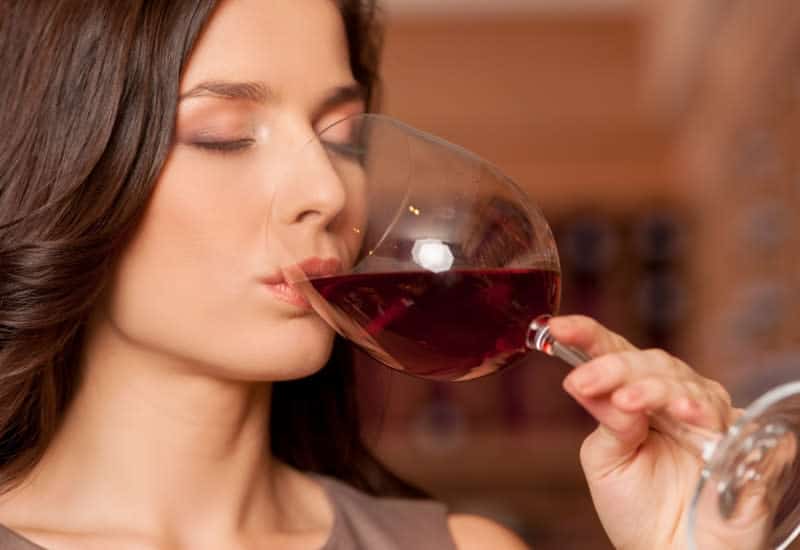Steps of Wine Tasting
Steps of Wine Tasting are often referred to as the 4 “S”s of Wine Tasting. Here at Your Own Winery, during the 10+ years we have been offering personal wine-making to wine lovers, a process which begins with a free wine tasting to select the wine or wines a wine-maker wishes to make. We have found the 4 “S”s of Wine Tasting to be invaluable to our wine-makers who are generally not experienced wine tasters. Keeps it simple, easy to remember, and most of all it’s fun.
1st “S” of Wine Tasting – “See”

Seeing your wine is the first clue what it might taste like. To fully See your wine, it is important to tip your glass in order to observe the wine from a very thin portion at the top tip of the wine – to it’s thickness in the bulb of the glass. For the best See, if possible hold your glass up against a lighter background – a tablecloth, napkin, or placemat.
Now, closely observe the wine for it’s color, it’s depth – this will give you an indication of wine’s body, it’s boldness. As a general rule, the lighter the color, the lighter the body: the deeper the color, the more full-bodied. Lighter-bodied reds, like Pinot Noir, tend too have a bright, cherry-like hue and are somewhat transparent even when observing through the full bulb of the glass – while full-bodied types, like Zinfandel, will be deep and dark, sometimes almost purple, and are generally opaque. With white wines, lighter-bodied types like Pinot Grigio will be pale, delicate yellow, and some will even have a slight greenish hue – while richer, fuller-bodies wines like Chardonnay will be a delicious golden color.
While still tipping your glass, also inspect the wine at its thinnest portion at the top of the wine tip. If you See any brownish tint what-so-ever – that’s not good. It almost always means the wine has begun or is a long way to spoiling – namely oxidizing, where exposure to air is turning the alcohol to acetic acid, thus turning the wine to vinegar.
2nd “S” of Wine Tasting – “Swirl”

The 2nd of the Steps of Wine Tasting. We have all seen it done – a wine lover swirling their glass of wine. But why. While it may seem so, it is not a wine snob thing – the Swirl does have a purpose in evaluating a wine.
When you do the Swirl, it pushes a portion of wine up along the side of the glass. Immediately after the Swirl, observe the film of wine running down the inside of the glass. That film is know as the wine’s “legs”. How thin or thick the film is, how slow or fast the legs run down the side of the glass are an indication of the body, the boldness of the wine.
Imagine doing the swirl with a glass of pure water, hopefully you will not see any legs from your water. Then imagine doing the swirl with maple syrup – resulting in a thick film settling down the glass very slowly. The 2 extremes to illustrate the point. If the water swirl is a 1, and the syrup swirl is a 10. White wine swirls will generally show legs in the 2 – 5 range. Sauvignon Blancs will generally show in the 2 – 3 range – Chardonnays in the 4 – 5 range. Red wine swirls in the 4 – 7 range – Pinot Noirs in the 4 – 5 range, Cabernet Sauvignons in the 6 – 7 range – all generally speaking. Wines such as Ports will show legs in the 8 – 9 range.
The image above shows the swirl while holding the glass up. Looks cool, but we recommend doing the swirl while the glass is resting on a flat surface, as the up-in-the-air swirl often leads to the least pleasing “S” of wine tasting – the Spill. The Swirl has another very important objective in Wine Tasting – but we’ll leave that for the next installment in the S’s of wine tasting.
3rd “S” of Wine Tasting – “Smell”

The third S of the steps of wine tasting is the “Smell”. At last, after the “See” and the “Swirl”, you finally get to experience some of the character of the wine through your sense of smell. Some of you might be asking, heck, when do I get to actually taste the wine? That’s coming, but do not underestimate the importance and value of the Smell. But also, there is a very important technique to the Smell.
Nature did not give human beings the sense of Smell of a bloodhound, so in order for your sense of smell to fully take-in the aromas of the wine – you must get your nose down into the wine glass, touching the top of the glass to the bridge of your nose (as in the pic above), thus blocking out any surrounding smells which might compete with the wine. While this might seem or feel weird, this nose-into-the-glass technique ensures your sense of smell will take-in as much of the wine’s aromas as possible.
Once the wine glass is in position – as your doctor would say – take in a deep breath. With the aromas of the wine now hitting the smell sensors in your brain, try to determine what those aromas smell similar to – cherries, raspberries, grapefruit, cut grass, tobacco, smoke – the list is endless. Of course everyone’s sense of smell is different, so there is no “right answer”. It’s what you smell, not what the experts say you should smell.
4th “S” of Wine Tasting – “Sip”

The fourth S in the steps of wine tasting is the “Sip”. This is about wine tasting, not wine drinking. The Sip is about letting you experience through your taste buds the flavors and character of the wine for the first time, hence wine tasting. The Sip is not taking a good portion of wine and swallowing, that’s wine consumption, that comes later.
One very important thing before you take the Sip. Your palate and taste buds must be clear of all other flavors such as coffee, chewing gum, any flavorful food. Any strong flavors which reside in your taste buds will severely hinder your ability to taste the wine’s true flavors and character. If possible, do not consume any such flavorful items 30 minutes before a wine tasting, and in all cases rinse your mouth, palate and taste buds with water before the Sip.
Now that your palate is clear, the next important step in the Sip. As subtle as the flavors of a wine may be, it is best that your clean palate and taste buds be acclimated to the new flavors of the wine. To accomplish this, take a small Sip of the wine and swirl it around your mouth for 3-5 seconds, then swallow so the back of your mouth and throat also become accustom to the wine’s flavors.
Now take in a full Sip (~1 oz) of the wine. First let it linger for a few seconds, then slowly swirl it around your mouth. Is your first impression that it is a very dry or very sweet wine, likely somewhere in-between. Is it a light wine, or a very bold wine? What flavors are your taste buds telling you are present in the wine? Does the wine have a somewhat bitter taste – that’s due to the level of tannins. (More on tannins in a future message). These characteristics are known as the “front end” of the wine – which you want to assess before swallowing the wine.
Now swallow the Sip. Does the wine feel soft and smooth on the swallow, or a dry and a bit rough? Do you get a slight burning feel in your throat as the wine heads down?
All of the above characteristics of the wine factor into whether you like it or you don’t. There is no right answer – it is totally your personal preference – and don’t like anyone tell you otherwise. In the end, life is too short to drink wine you don’t like – however bloody good someone else says it is.
Top Page Links:
Personal Wine Making
Winery Bridal Showers
Wine Theme Parties
Read all our 5-Star Reviews on Google

